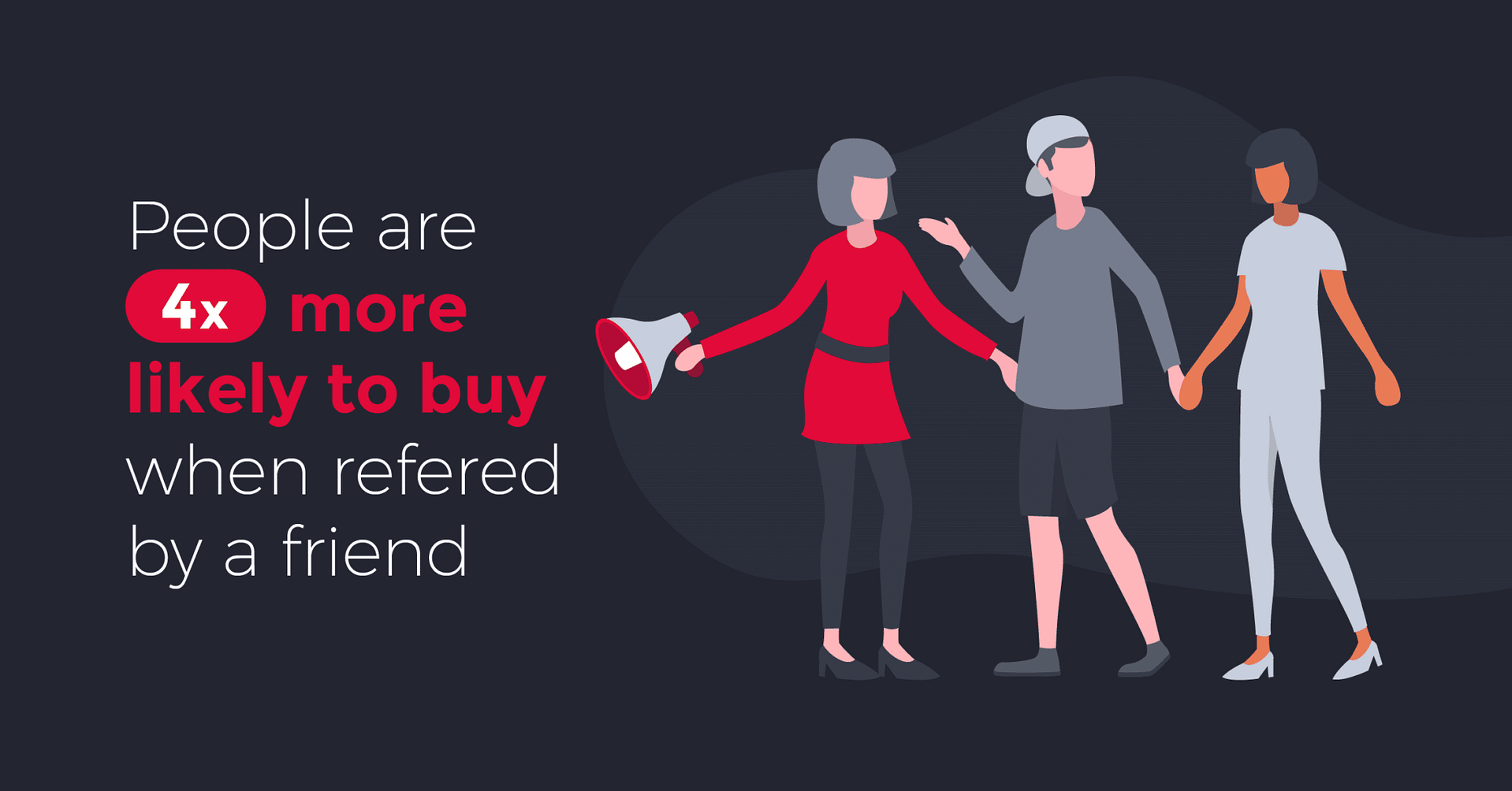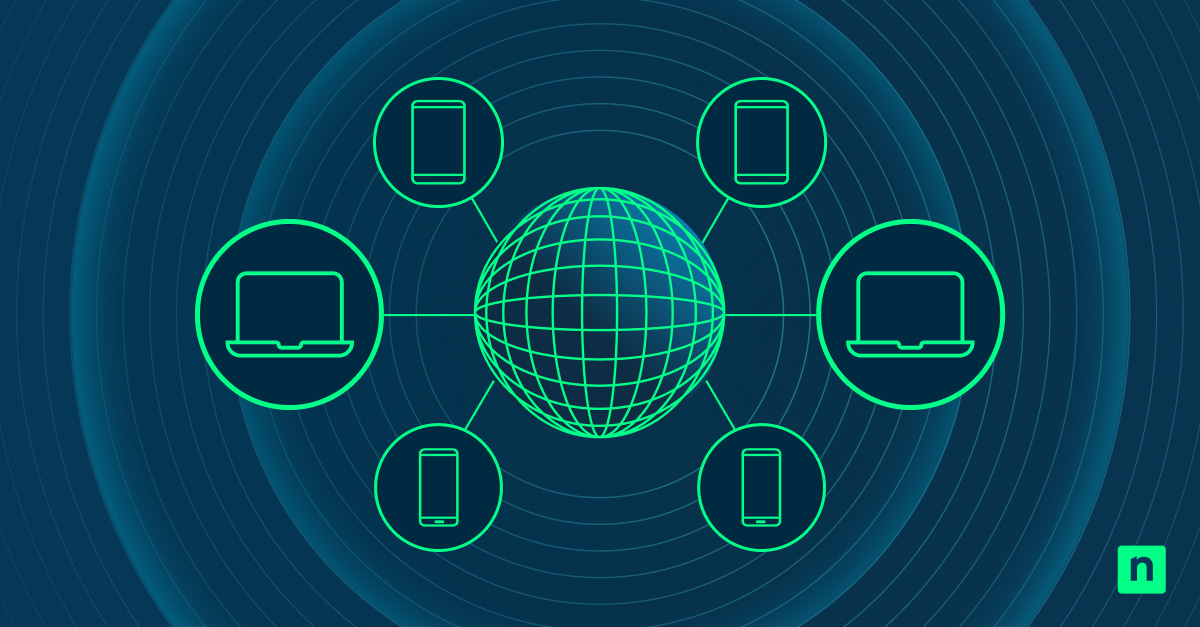Counting on client referrals as a primary driver of new business? Learn how to increase your volume and frequency without coming across as pushy or desperate.
As an MSP, referrals are likely your business’s best friend.
If you don’t have a lot of time or budget to devote to marketing, they’re probably what you’ve built your business on — and for good reason.
Peer-to-peer referrals are still considered the most influential form of advertising according to a Trust in Advertising report from Nielsen.
In fact, referrals are the most successful marketing tool for small businesses in the U.S. Referred customers tend to be more loyal than other customers, even having a 37 percent higher retention rate according to research from Deloitte.

Source: HuffPost
Referrals are one of the most powerful and affordable ways to generate new MSP customers. However, as you’ve probably noticed, their value dries up awfully quickly when you aren’t proactively working to generate them.
If you aren’t sure how to actively pursue more referrals without being annoying or pushy, here are several easy-to-implement tactics to turn a sporadic trickle into a reliable flow of great referrals that generate interest, customers, and profit for your MSP company.
7 Tactics to Steadily Increase Your MSP Referrals (Without Seeming Pushy!)
Ready to start growing your roster of great referrals, without coming across as rude or needy?
Here’s how to tackle it.
1) Do An Awesome Job
First and foremost, the absolute best way to get your customers to refer you is to do what you do best — provide exceptional IT service. For most successful MSPs, this means moving beyond reactive break/fix work and becoming a true partner that provides strategic value to your customers’ businesses.
If you can do that, you’re off to a great start when it comes to generating referrals without coming across as desperate or pushy.
Now comes the hard part.
2) Just Ask!
In Spiceworks’ “How to Win Friends and Influence IT Pros” report, they found that a whopping 97 percent of IT professionals rely on peer recommendations and reviews when shopping for new products or service providers.
If you want to be one of those service providers that’s getting recommended, there’s only one way to start — just ask.
Getting great feedback in a client meeting or phone call? Take a second to ask if they’d be willing to spread the word.
It can be as simple as saying something like:
“I’m glad you’re happy with our services! Who else do you know who would benefit from working with us?”
Keep it casual, but be direct and sincere.
What if they say they don’t know anyone else who needs an MSP, or that they need some time to think about it (which we both know is never going to happen)?
Don’t give up just yet. Remember, the second you stop asking for referrals is the second they start drying up.

Source: Nielsen
3) Be Persistent
If you’ve been selling IT services for any length of time, it’s safe to assume you’ve gotten fairly used to hearing “no” or “let me think about it.” It’s basically a given. But what isn’t a given is how you decide to react to that answer.
A “no” is actually the easiest answer to manage — let it be for now and plan to circle back with some of the methods we’ll cover later in this article. However, an answer like “let me think about it” is a great opportunity to nudge the conversation forward with this script from Close CRM cofounder Steli Efti:
Objection Handling Script Example
“I appreciate you giving it some thought! I’m sure you’ll have lots of recommendations for us in the future. But what if we just take one minute today to think of a friend that’s in a similar situation and could benefit from our service.”
Alright, this might feel a little out of the ordinary at first, but it’s not pushy or rude — it’s a friendly request among business partners. And when as many as two out of every five people will give you a referral if you ask just one more time, it’s worth doing.
If they still can’t think of someone to refer, let it go and acknowledge that there will always be another time. But if they are able to give you a name, be sure to thank them by making it exceedingly easy for them to connect you with their peer(s). Here’s how.
4) Do (Most of) The Work for Them
Since your customer is doing you a favor by referring you, do them a favor by making it as easy as possible with this email referral template:
Email Referral Template Example
“Hey, [Referral Name],
I wanted to connect you with [Your Name].
[His/her] IT company has been able to cut our unplanned downtime in half and saved us $35,000 last year in server expenses. Plus, [his/her] cybersecurity services kept us safe through that huge American Medical Collection Agency data breach that happened a few months back.
I thought you might be interested in hearing more about [Your Name]’s services. I’ll let you two take it from here.”
Making it easy for your client to plug in the right information and hit “Send” in 30 seconds or less could be the difference between connecting with a warm lead and sending your millionth batch of cold emails.
5) Introduce the Topic of Referrals on Day One
Alright, now that you’ve got a few scripts you can fall back on when asking for referrals, it’s time to start asking for them earlier than you may have originally thought necessary.
In fact, right after the agreement is signed is when you should first ask your new client for a referral. Why? Because they’re excited. They just invested in both their business and yours, and it’s likely they’ll be open to telling someone the good news.
You can also ask for referrals during other high points along the customer journey. Look for opportunities at the end of a positive quarterly business review (QBR), the closing of a successful project, and so on.
6) Put Social Media to Work for You
Over 80 percent of American consumers are influenced by friends’ social media posts when making a purchasing decision.
If you’re not using social media business profiles to stay connected with current and potential clients, you’re missing out on a valuable opportunity to generate referrals that will attract new MSP customers.
The best thing you can do is be present, consistent, and engaging on whichever social channels you choose. We’re not saying you need to send a tweet every 30 minutes — just that you should be responsive and relatively easy to contact.
This doesn’t just create a positive and modern perception of your brand, it also sets the stage for your socially-active clients to refer you to their valuable, warm contacts.
More tactically, social media business pages are a great platform for requesting referrals and sharing client testimonials. This kind of user-generated content (UGC) has a 28 percent higher engagement level on social media than content created by the brand itself. Plus, it’s 2X more likely to be shared.
Speaking of sharing, social media makes it extremely easy for customers and other followers to share your brand, your posts, and their thoughts about your MSP services, enabling you to spend less time on manual marketing efforts.
If you’re on a more “professional” social media platform such as LinkedIn, chances are you’re already connected to a lot of both current and former customers. If not, what are you waiting for? It’s high time you started using LinkedIn to do what it was actually created to do — build business relationships.
For under $100 a month, LinkedIn’s Sales Navigator tool will allow you to dig into your connections’ connections, where you can identify ideal customers to whom you can then request an introduction or referral.
7) Create Mutually-Beneficial Partnerships
Now it’s time to look beyond just your client base to develop referral-based partnerships with other businesses you know your clients use.
These may range from other service providers — VoIP phone service and Wifi providers, for example — to figures in trusted advisor roles like accountants, attorneys, etc.
Of course, be careful about partnering with anyone whose services overlap or may even just potentially overlap with yours. In most cases, it’s not worth the risk of conflict.
Tip: While providing monetary incentives for individual referrals isn’t exactly recommended (keep reading to learn why), it’s more acceptable to pay other businesses for referrals. A good place to start is offering the first month of MRR (monthly recurring revenue) generated by the new customer.
What NOT to Do When it Comes to Establishing Referral Programs
Remember that clients will refer you because you do awesome work that makes them happy — it’s just a natural thing that people do to show their appreciation for each other. If you feel the need to show your appreciation for them in more substantive ways, however, just be sure that it’s sincere and well thought out.
Offering a discount or cash reward to someone who was planning to refer you anyway may be off-putting or, worse, it may come across as some kind of bribe. On the other side of the spectrum, offering to exchange value for referrals with a client who isn’t really that hot on your services at the moment can be detrimental to your professional relationship.
Generally speaking, the best way to keep it classy while showing your appreciation for client referrals is to gift something thoughtful and useful. Think along the lines of a movie pass that the whole family can use, a gift card for a nice local restaurant, or even a good bottle of whiskey or wine if you know the client will enjoy it.
And while you’re at it, it wouldn’t hurt to also send a small gift to the newly-referred client to start your relationship on the right foot and build a virtuous cycle of appreciation and reciprocity.
Source: University of Chicago
If this article has inspired you to spend more time creating a powerful customer-generating referral strategy, please feel free to spread the word to a friend of your own.
And if you’re looking for a tool that can give you more time to work on your business instead of in it, try NinjaOne for free.
It’s powerful. It’s intuitive. And it didn’t get ranked number one RMM on G2 Crowd for nothin’.








